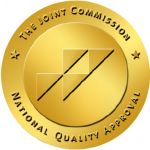According to the National Institute on Drug Abuse, more than 115 Americans die after overdosing…
In the race to save the lives of the millions of people suffering from opioid addiction and the hundreds of thousands of people dying from opiate overdoses, drugs like Subutex and Suboxone have been used to help treat the withdrawal symptoms. Overcoming heroin and opioid withdrawal is the first painful step to living a fulfilling life in the aftermath of a terrible disease.
Subutex and Suboxone are medications that have been prescribed to help treat people suffering from opiate and heroin addiction. The FDA approved both in 2002. Both medications contain buprenorphine, the drug opioid agonist-antagonist that helps prevent and alleviate the painful withdrawal symptoms of heroin and opioid addiction.
Buprenorphine is not a cure for opiate dependency and addiction. According to the National Institute on Drug Addiction, buprenorphine has the potential to be an important part of medical-assisted treatment (MAT) as it provides people addicted to illicit and prescription opioids a better chance of entering treatment and recovering from addiction.
Taking any medication that has buprenorphine is dangerous without a doctor’s prescription or supervision. Buprenorphine can cause precipitated opiate withdrawal if taken without enough time between the last use of opioids. Precipitated withdrawals exacerbate the acute opioid withdrawal and can last for up to 48 hours. Being honest with doctors about previous opioid or heroin use is necessary to ensure that precipitated withdrawal doesn’t lead to an even worse relapse.
While Suboxone and Subutex do help alleviate the withdrawal symptoms, they do not cure addiction. Addiction is a complex brain disorder that presents itself through the compulsive use of drugs or alcohol. Despite the harmful and sad consequences of someone’s drug use (such as loss of family, job loss, isolation, depression, health risks, and more), continued using and drinking appears insane to other people.
Using and drinking is usually a symptom of other issues. Any addiction treatment program needs to emphasize therapy, well-being, and addressing underlying conditions to give the addict the best chance at living a life free of drugs and alcohol without relapsing.
Differences between Suboxone and Subutex
Suboxone is delivered with a sublingual film while Subutex was administered with a sublingual tablet. The difference may seem small since both dissolve under the tongue. As a tablet, Subutex was more easily changed for people to be able to take the drug not as intended. There are many reports of people crushing Subutex tablets, mixing it with water, and injecting it to get high.
The active ingredients are also a significant difference between the two medications. Suboxone contains an extra active ingredient, Naloxone, that Subutex does not. Naloxone is the life-saving drug that almost instantly reverses the fatal side-effects of opioid overdose. Naloxone also prevents someone from feeling the euphoric high produced from opiates.
Subutex has a higher likelihood of abuse than Suboxone. Both have the potential for physical dependence and abuse, especially without an emphasis on therapy and relapse prevention.
Subutex is different than Suboxone in a couple of important ways that explain why Subutex is more likely to be abused. Reckitt Benckiser Pharmaceuticals, Inc., discontinued marketing and selling Subutex in 2015 voluntarily. According to the FDA, Reckitt decided to stop selling the drug for “reasons other than safety or effectiveness,” the company stated that Subutex “creates a greater risk of misuse, abuse, and diversion” than Suboxone.
According to published research in the Journal of Substance Abuse Treatment, drugs that are single-ingredient and in tablet form are more likely to be abused than medications like Suboxone. “The abuse rate for the single ingredient tablets was 6.5 times that of combination film,” explains the researchers, “while the combination tablet abuse rate was twice the combination film rate. The differences were statistically significant and consistent over time”
If you or a loved one is worried about abusing or misusing Suboxone, medically supervised withdrawal is always an option. Heroin or opioid withdrawal is not fatal, but they can be very uncomfortable and painful. Treatment centers can help people get through withdrawal without the risk of introducing new drugs that someone may abuse or become physically dependent on.
Life can be good again and we’d like to show you how.









